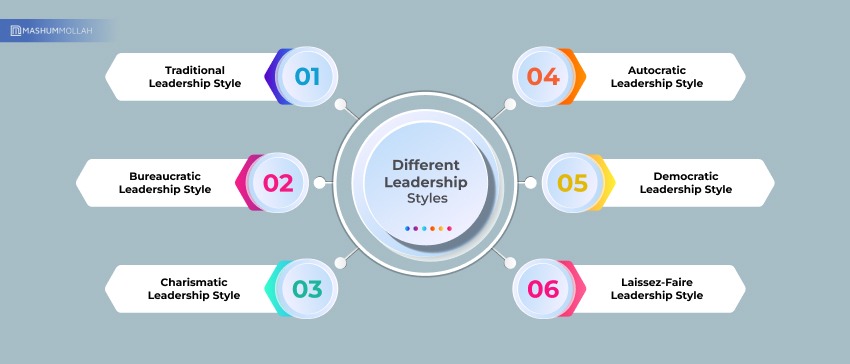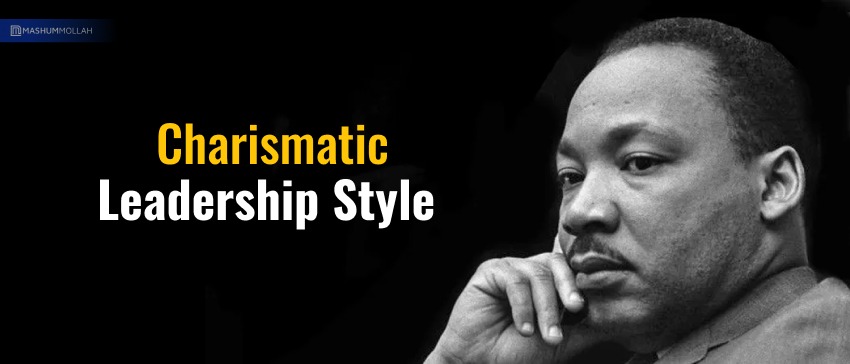Leadership, Leadership Style
What Are Leadership Styles? Definition And Frame Work

The word leader does not have to create the same pictograph for all the leaders representing different types of work environments. Although certain elements in different leadership styles are common, they vary in their scales.
Some leadership styles consist of elements that the others are completely devoid of. As a result, there are different types of leadership styles. Whether it is your freshmen year in an organization or you have spent years in it, you may have to take up the mantle of a leader.
Whether you are leading a team, managing a project, or supervising a meeting, you must have certain qualities defining you as a leader. Unfortunately, there is no specific way to instill leadership characteristics within someone. But, one can polish different leadership traits and become a fine leader.
This article will give you a clear insight into leadership styles and help you understand how they work.
What Are Leadership Styles?

Leaders exist to motivate, inspire, influence, and guide their team members and subordinates. Leadership styles exist to define a leader’s way of planning their ideas and executing them to obtain their objective through the multiple dynamic characteristics that characterize them as leaders.
The leadership style also manifests a leader’s behavioral approach that determines the dynamics between the leader and the subordinates. It helps them obtain their objective through a collaborative effort. The effectiveness of a leadership style is marked by the extent of trust a leader can build among the followers.
The trust built by the leader and their behavioral approach helps their subordinates accomplish the organization’s goal through a collective effort. For this effort to be fruitful leaders need to be transparent, communicative, trustworthy, and willing to listen to their subordinates.
Why Are Leadership Styles Important?

As explained before, leadership styles combine personality, experience, family dynamics, emotional intelligence, and thought process. A leadership style affects a leader’s capability to take charge, give a command or make any executive decision when the situation requires them. It also decides whether their decisions should have a self-dependent or more consultative approach.
A leader’s styles to lead an organization is also deeply rooted in the organization’s work environment. When leaders understand their leadership style, they become more capable of taking ownership, responsibility, and control.
It also helps decide how the employees must be treated within the organization. Choosing the proper leadership style can affect the overall mental health of the organization. But, how do you find out which style of leadership is good for you? Here are some pointers to help you understand –
- Leaders need to communicate clearly with their subordinates.
- Making the engaged is important.
- Employee recognition.
- Taking feedback from employees.
What Are Different Leadership Styles?

Yes, some people are born to lead. But, some people can become leaders through constant practice of some of the common leadership characteristics. However, there are different types of leaders. They differ based on their qualities and characteristics.
The famous German economist and sociologist Max Weber is responsible for citing three important leadership styles: the traditional leadership style, the bureaucratic leadership style, and the charismatic leadership style.
On the other hand, American social psychologist Kurt Lewin describes autocratic, democratic, and laissez-faire leadership styles. Here is a brief explanation of these different types of leadership styles.
- Traditional Leadership Style.
- Bureaucratic Leadership Style.
- Charismatic Leadership Style.
- Autocratic Leadership Style.
- Democratic Leadership Style.
- Laissez-Faire Leadership Style.
Traditional Leadership Style

Kurt Lewin described this leadership style in 1939, along with two other leadership styles. Traditional leadership styles work as a system where a leader is chosen through inheritance. Some examples of them are kings, dictators, or someone taking over their own family business.
Leaders following such leadership usually encourage employees to work for them. They motivate, give direction, motivate the employees and help them accomplish the business goal.
Bureaucratic Leadership Style

The Bureaucratic leadership style has its root in Max Weber’s work The Theory Of Social And Economic Organization, which came out in 1920. Such leadership styles are defined by a clear command chain existing within an organization. The employees of the organization are aware of their objectives, the hierarchies, and the rules and regulations that the organization follows.
Read more about bureaucratic leadership style.
Charismatic Leadership Style

Also described by Max Weber, the Charismatic leadership style is defined by a leader’s dynamics and persuasive personality that help them influence, intimidate, and build a bond with the employees within the organization.
When an organization feels stagnant, a charismatic leader can help it move forward with its uplifting and motivating personality. As a result, they have highly influential personalities.
Read more about charismatic leadership style.
Autocratic Leadership Style

The autocratic leadership style is among the most outdated leadership styles. Kurt Lewin talked about this leadership style in 1939. The autocratic or authoritarian leadership style makes a leader self-dependent on their decisions.
Leaders following this leadership style do not care about the opinion or engagement of the organization’s members in decision-making. They create a structured environment through the rules, their confidence, and quick and authoritative decision-making.
Read more about autocratic leadership style.
Democratic Leadership Style

A democratic leadership style is completely opposed to the ideas of the autocratic leadership style. Kurt Lewin’s idea about the democratic leadership style describes the complete participation of the employees in decision-making.
Under such leadership styles, the employees feel free to share their ideas and opinions with the leaders. Employees feel empowered and creative and also share the responsibility of the organization.
Read more about democratic leadership style.
Laissez-Faire Leadership Style

Under the Laissez-faire leadership style, a leader minimizes their involvement in how the employees are handling the business. Such leadership style is characterized by the organization’s trust in the employees.
Leaders following this type of leadership style don’t micromanage every operation within the organization. They allow leaders to use their creativity, offer them resources, and trust them to meet the business goal.
Frequently Asked Questions (FAQs):
The above topics should help you understand what leadership styles are and what are the most prominent leadership styles.
Ans: When talking about the three main leadership styles, you can choose the three styles described by Max Weber, or you can cite the names of the styles that Kurt Lewin offered. Here are the three main leadership styles that I suggest –
1. Bureaucratic Leadership Style.
2. Democratic Leadership Style.
3. Laissez-Faire Leadership Style.
Ans: A democratic leadership style is the best form of leadership. Unlike the authoritative leadership style, it does not take away the employees’ freedom to put forward their opinions. It also does rely on the rigidity of the rules of the bureaucratic leadership style. It is also more controlled than the charismatic leadership style that follows only the dynamic personality of a leader.
Ans: Unless you are following any particular leadership style, there are some general good qualities of a leader that you can follow –
1. Empathy.
2. Active listening.
3. Honesty.
4. Decisiveness.
5. Confidence.
6. Perseverance.
7. Integrity.
Conclusion!
Whether you are leading a business organization, a sports team, or a team of professionals, you have to choose from the best leadership styles. A leader should understand the proper type of leadership style applicable to a specific organization or a group of people.
Understanding the different types of leadership styles and practicing their qualities should help you develop the leadership style applicable to your organization. Did you find this article informative? Please share your opinions (if you have any) in the comment.
Read More: